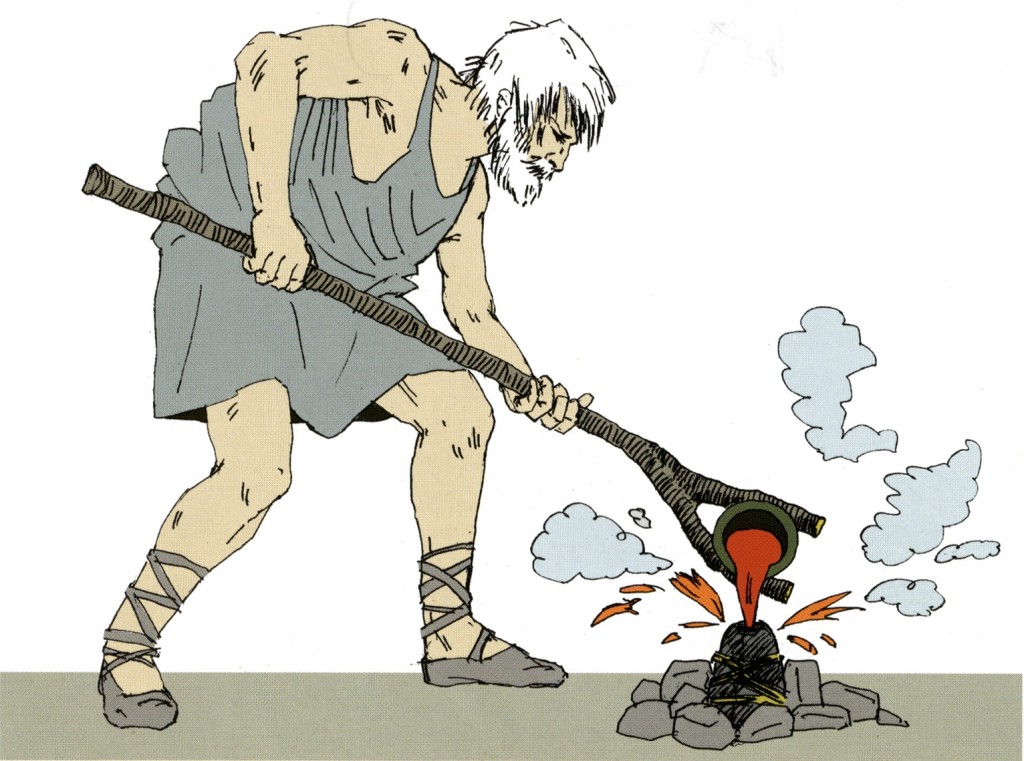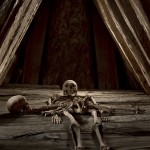The Bronze Age: 2,200 – ca. 700 years BC

Bronze – A New Raw Material Changes Human History
Magnificent sparkling jewellery, bronze weapons, treasure troves – the ALT presents the newly-acquired riches of an entire epoch!
Tools of stone, bone, and wood were still commonly used by farmers and graziers for a long time after the end of the Neolithic. Since around 2,200 BC, however, a new raw material, appearing first in the eastern Mediterranean area, had been spreading – bronze. An alloy formed from copper and other metals, most commonly tin, bronze possessed the optimal combination of hardness and ductility. Initially used principally for prestige jewellery, it was soon also used to improve harvesting implements and it revolutionised weapons technology. Expertise in the mining, casting, and smithing of bronze was particularly notable in the forelands of the Harz Mountains. This represented far more than just a technological advancement. Bronze was also traded, in the form of ingots or as finished products, and it had a permanent effect on almost every aspect of life: crafts, agriculture, religious beliefs, and, not least, social relationships.
With the knowledge of bronze metallurgy cultural similarities developed across the settled areas of central Germany in the early Bronze Age (2,200 – 1,600 BC). In archaeological research the resulting culture was named the Únětice Culture, after a site near Prague. These similarities include burial practices – “crouched” inhumations – and pottery styles. The Únětice Culture’s settlements on the loess soils of the Thuringian Basin were initially agrarian in nature. Increasing trade in bronze and metal crafts, however, created an impressive amount of wealth. As a result an élite class formed within their society, the dead of which were interred in burial mounds. An example of this is the “Bronze Prince” from Leubingen (Municipality of Soemmerda).
In the course of the mid-Bronze Age (1,600 – 1,200 BC) bronze metallurgy spread throughout Europe. On the basis of the spread of bronze items we can infer wide-scale trade networks and cultural conformity. A multi-regional change in burial practices can be recognised. The dead were now – most noticeably south of the Thuringian Forest – interred laid out full-length, fully attired, in burial mounds (or tumuli) of earth and stone. This period is also known as the Tumulus Culture.
In the late Bronze Age (1,200 – 700 BC) new cultural and intellectual trends spread through Thuringia from southeastern Europe. Predominant among these was the convention of cremating the dead and interring the remains in urns within a cemetery. In archaeology this is known as the Urnfield Culture. New styles for ceramic and bronze objects also became prevalent. The stimulus for these changes originated in the Mediterranean region. There, conflict between classical civilisations had also led to new military technologies. Swords and lances, helmets, armour, and shields – a wide variety of both offensive and defensive equipment – spread. Many such items have been found in hoards excavated in Thuringia.
It was an eventful and turbulent time, archaeologically evidenced in Thuringia by fortified hill-forts, like the settlement on Jenzig Mountain near Jena, and a multitude of bronze hoards from the period.



